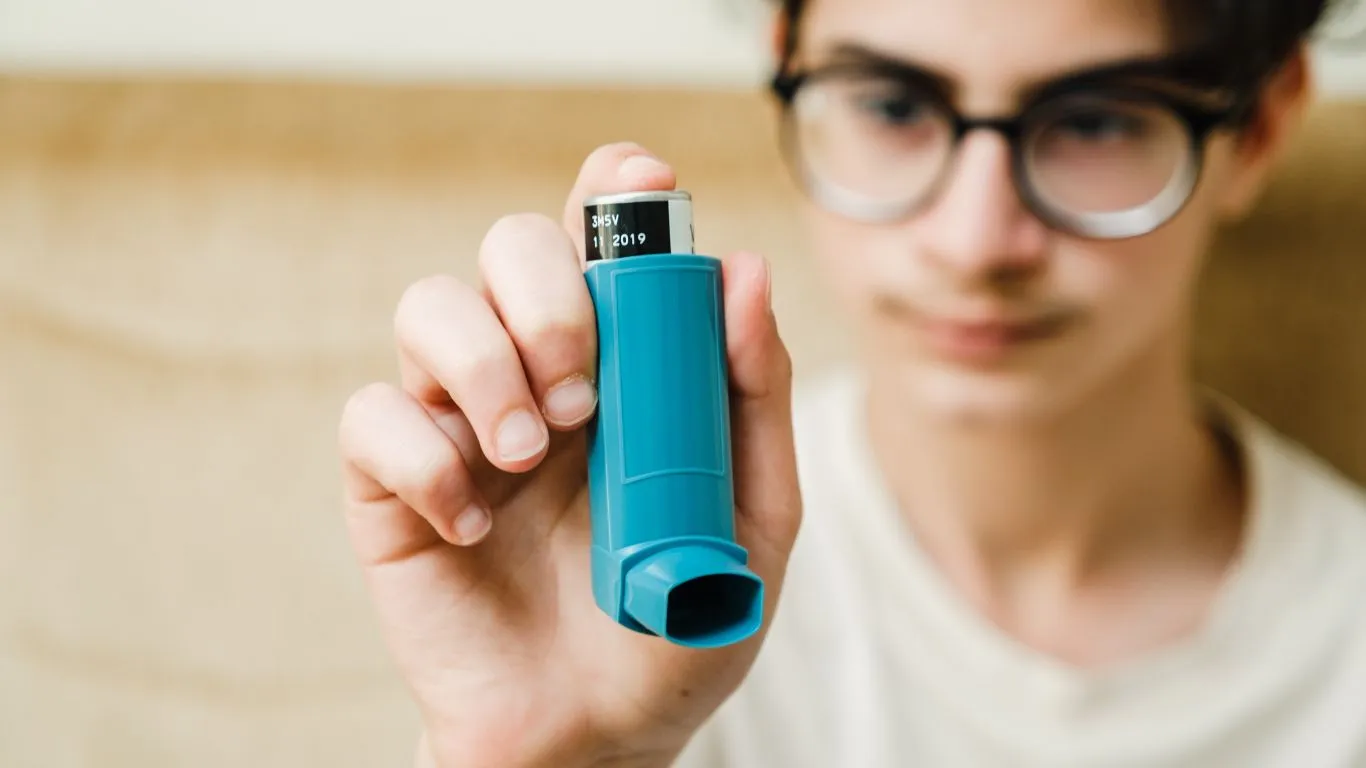Why You Might Be Cleaning Your Nebulizer Wrong: Fix It Today
Ever wonder how to clean a nebulizer properly without it feeling like a total chore? Trust me, you’re not alone. As a pulmonary nurse practitioner, I’ve worked with countless patients who use nebulizers daily and are either not taught the right way to clean them—or just get overwhelmed by all the steps. And hey, I get it. Life is busy, and if you’re already managing a chronic lung condition, one more thing on your plate can feel like too much. But here’s the thing: skipping proper cleaning is a recipe for trouble. We’re talking infections, device damage, and reduced effectiveness of your treatments. That’s why I want to walk you through how to keep your nebulizer squeaky clean—without the stress, science talk, or icky buildup. You got this!
Why Cleaning Your Nebulizer Is a Must (No, It’s Not Optional)

If you’ve ever had a nebulizer start to smell funky or noticed a weird residue inside the cup—yep, that’s a sign it’s overdue for a good clean. I had a patient once—let’s call him Joe—who kept ending up in the hospital with bronchitis flare-ups. Turns out, he hadn’t cleaned his nebulizer in weeks. The bacteria build-up was off the charts. Yikes, right?
Your nebulizer is delivering medication *straight into your lungs*, so it better be clean. Here’s what happens when it’s not:
- Germs thrive in damp environments. That leftover condensation? Perfect breeding ground.
- Medication delivery drops. If the parts are clogged or sticky, your meds won’t reach your lungs properly.
- Infections increase. Dirty equipment can reintroduce bacteria into your airways with every breath.
Basically, a dirty nebulizer can undo all the good your meds are trying to do.
When Should You Clean Your Nebulizer?

I usually recommend a two-level approach: quick cleans after each use and a deep clean at least once a week. It sounds like a lot, but once it becomes a routine, it honestly takes less than five minutes. Here’s what I teach my patients:
After Every Use
- Take the nebulizer apart—disconnect the mouthpiece/mask, medication cup, and tubing.
- Rinse the parts (except tubing) under warm tap water. Don’t skip this, even if you’re in a rush.
- Shake off the water and let everything air dry on a clean towel or paper towel. Try not to reuse towels; bacteria love those fibers.
Weekly Deep Clean
This one is super important, especially if you’ve been sick recently or notice any discoloration.
- Disassemble all removable parts (again, not the tubing—more on that in a bit).
- Wash everything in warm soapy water. Use a mild dish soap, nothing scented or harsh.
- Soak the parts for about 20 minutes in a mix of one part white vinegar to three parts water. This helps kill lingering bacteria.
- Rinse everything thoroughly and air dry completely. Never store damp parts!
Pro tip: If your nebulizer parts aren’t drying fast enough, use a clean paper towel to pat them dry—just don’t rub them aggressively.
What About the Tubing?

Okay, let’s talk tubing. You *do not* want to run water through it—that’s a mistake I’ve seen too often. Moisture in the tubing can get trapped and turn into mold or bacteria soup (gross, I know). Here’s the deal:
- Do not rinse the tubing.
- Replace it every 2-4 weeks, or sooner if it looks cloudy, cracked, or smells weird.
- Store it properly: Keep it in a dry, clean container when not in use.
When patients follow these basic steps, their nebulizers last longer, their symptoms stay better controlled, and we see way fewer complications. Cleaning doesn’t need to be fancy or time-consuming—it just needs to be consistent.
Common Mistakes to Avoid When Cleaning a Nebulizer

Alright, let’s be real—none of us are perfect. Even the most diligent folks can miss a step now and then. But when it comes to how to clean a nebulizer properly, some mistakes can actually cause more harm than good. I’ve seen it firsthand, and it’s usually the simple stuff that gets overlooked.
Here are a few common slip-ups I’ve come across (yes, even among long-time users):
- Skipping the rinse after each use. Even if it’s just saline, that residue builds up over time.
- Using hot water straight from the kettle—too hot can warp the plastic. Lukewarm tap water is safer.
- Drying parts with dish towels that may carry lint or bacteria. Clean paper towels or air-drying is the way to go.
- Reassembling while wet. Moisture inside sealed parts is a breeding ground for mold—give it time to fully dry.
I once had a sweet older patient, Ms. Rita, who thought boiling her nebulizer parts would “super sanitize” them. While her intentions were good, the heat actually damaged her mouthpiece, making it less effective. She ended up needing a replacement just weeks after getting a new unit. Lesson learned, right?
Best Practices for Long-Term Nebulizer Care

Let’s switch gears to some proactive maintenance tips. Think of your nebulizer as an investment in your health. You wouldn’t drive your car without oil changes—same idea here. With just a little care, your equipment will work better and last longer.
Replace Parts Regularly
Most nebulizer components aren’t meant to last forever. Here’s a good rule of thumb:
- Mouthpieces and masks: Every 1-2 months, or sooner if they get cloudy or cracked.
- Medication cup: Every 6 months—these can warp slightly over time, affecting airflow.
- Tubing: Every 2-4 weeks (as mentioned earlier, don’t try to clean it—just replace it).
Check with your provider or equipment supplier to see if your insurance covers replacement parts. Many do, and you shouldn’t have to pay out-of-pocket every time.
Keep Your Storage Clean
This one gets overlooked a lot. After drying, make sure you store your nebulizer in a dust-free, dry space. I tell my patients to use a sealed container—like a clean food storage bin—that stays in a cool cabinet. Avoid keeping it near bathrooms or kitchens where moisture or grease can settle on parts.
How to Disinfect During Cold and Flu Season

When you or someone in your home is sick—especially with a respiratory infection—you’ll want to up your cleaning game. I tell families this all the time during cold and flu season (which always seems to last longer than expected).
Disinfect More Often
Instead of weekly deep cleans, aim for every other day—or even daily if your symptoms are flaring. Use the vinegar and water solution I mentioned earlier, or check your nebulizer’s manual for disinfectant-safe products. Some are even dishwasher-safe (top rack only!), but always double-check your model’s guidelines.
Keep Sick-Day Supplies Separate
If multiple people in your household use nebulizers, assign each person their own set of accessories. I’ve seen families try to save money by sharing mouthpieces—not ideal, especially when viruses are making the rounds. Label parts with a marker or use color-coded bins to keep things clear.
My Go-To Cleaning Routine for Busy Days
Look, I know some days feel like a whirlwind. Between appointments, work, and just trying to get through the day, cleaning your nebulizer might not be top of mind. So here’s my “bare minimum” quick-clean method that I share with patients who are strapped for time:
- Immediately after use, rinse the medication cup and mouthpiece under warm water (30 seconds max).
- Shake off the water and place the parts on a clean paper towel.
- Let air-dry until your next use. (If you’re in a hurry, pat gently with a fresh paper towel.)
It’s not perfect, but it’s miles better than skipping cleaning entirely.
And don’t worry—if you fall off the routine for a few days, just jump back in. No guilt. What matters most is staying consistent over time and knowing that this simple habit really can prevent bigger health issues down the line.
Traveling with a Nebulizer: Keeping It Clean on the Go

Let’s face it—life doesn’t pause just because you need respiratory treatments. I’ve had plenty of patients ask me, “Bianca, how do I clean my nebulizer properly when I’m not at home?” Whether you’re heading out for a weekend trip or staying with family, you can absolutely keep your gear clean and safe—it just takes a little planning.
My On-the-Go Cleaning Kit
I always recommend packing a small kit that includes:
- Travel-size dish soap (unscented, if possible)
- Disposable paper towels or lint-free cloths
- Zip-top bags for clean and used parts
- Pre-measured vinegar in a leak-proof container (you can also use single-serve packets of disinfecting wipes if vinegar’s not an option)
- Collapsible bowl or cup for soaking parts
One of my teen patients once told me she uses a clean shaker bottle to soak her parts in the hotel room sink—brilliant, right? It’s about being resourceful and building a habit, no matter where you are.
Quick Cleaning Routine for the Road
After each use, give the components a rinse with bottled water (if the tap water’s questionable), shake off the excess, and let them dry inside a clean towel or paper bag. If you don’t have time for full disinfecting daily, aim to do a vinegar soak at least once during your trip—or as soon as you get home.
Signs Your Nebulizer Needs a Deep Clean or Replacement

Sometimes, even with regular cleaning, parts wear out or need extra attention. Here are some signs you should never ignore:
- Visible residue or buildup that doesn’t go away after soaking
- Cracked plastic or rough edges, especially around the mouthpiece or cup
- Strange smells—this usually means bacteria or mold have settled in
- Change in mist quality—if the output seems weak or sputtery, the parts may be compromised
I had a patient, Mr. Lee, who was using the same medication cup for over a year. His medication delivery dropped significantly, and we realized it was due to micro-cracks in the plastic. A new set made all the difference—and his breathing improved within days. It really does matter.
Trusted Resources and Expert Recommendations
If you ever feel unsure about whether you’re doing things right, you’re not alone. Even as a pulmonary NP, I double-check manufacturer instructions from time to time. Different nebulizers can have specific cleaning requirements, so when in doubt, consult your device manual or reach out to your healthcare provider.
Here are a few trusted sources I often refer patients to:
- https://www.lung.org/ – American Lung Association offers fantastic patient-friendly info on respiratory care
- https://www.cdc.gov/ – CDC guidelines on infection prevention, especially relevant during flu season
- https://www.aafa.org/ – Asthma and Allergy Foundation of America is great for product recommendations and education
Final Thoughts: Why This All Matters
At the end of the day, learning how to clean your nebulizer properly isn’t just about checking a box—it’s about protecting your lungs, your comfort, and your quality of life. I’ve seen the difference it makes. Cleaner equipment equals fewer infections, better medication delivery, and more peace of mind for you and your family.
Whether you’re a new user or someone who’s been managing their condition for years, just know that taking a few minutes each day to keep your gear clean can truly add up to better outcomes. It’s one of those simple habits that pays off in a big way.
And hey—if you ever forget a step or get off track, don’t beat yourself up. Just pick it back up the next day. I’m cheering you on!
Disclaimer
This article is for informational purposes only and does not substitute for medical advice, diagnosis, or treatment. Always follow your healthcare provider’s instructions and consult your nebulizer’s manufacturer guidelines for cleaning and maintenance.

Bianca Nala is a compassionate Nurse Practitioner with a strong background in primary and respiratory care. As a health writer for Healthusias.com, she combines her clinical expertise with a talent for clear, relatable storytelling to help readers better understand their health. Bianca focuses on topics like asthma, COPD, chronic cough, and overall lung health, aiming to simplify complex medical topics without losing accuracy. Whether she’s treating patients or writing articles, Bianca is driven by a single goal: making quality healthcare knowledge accessible to everyone.





